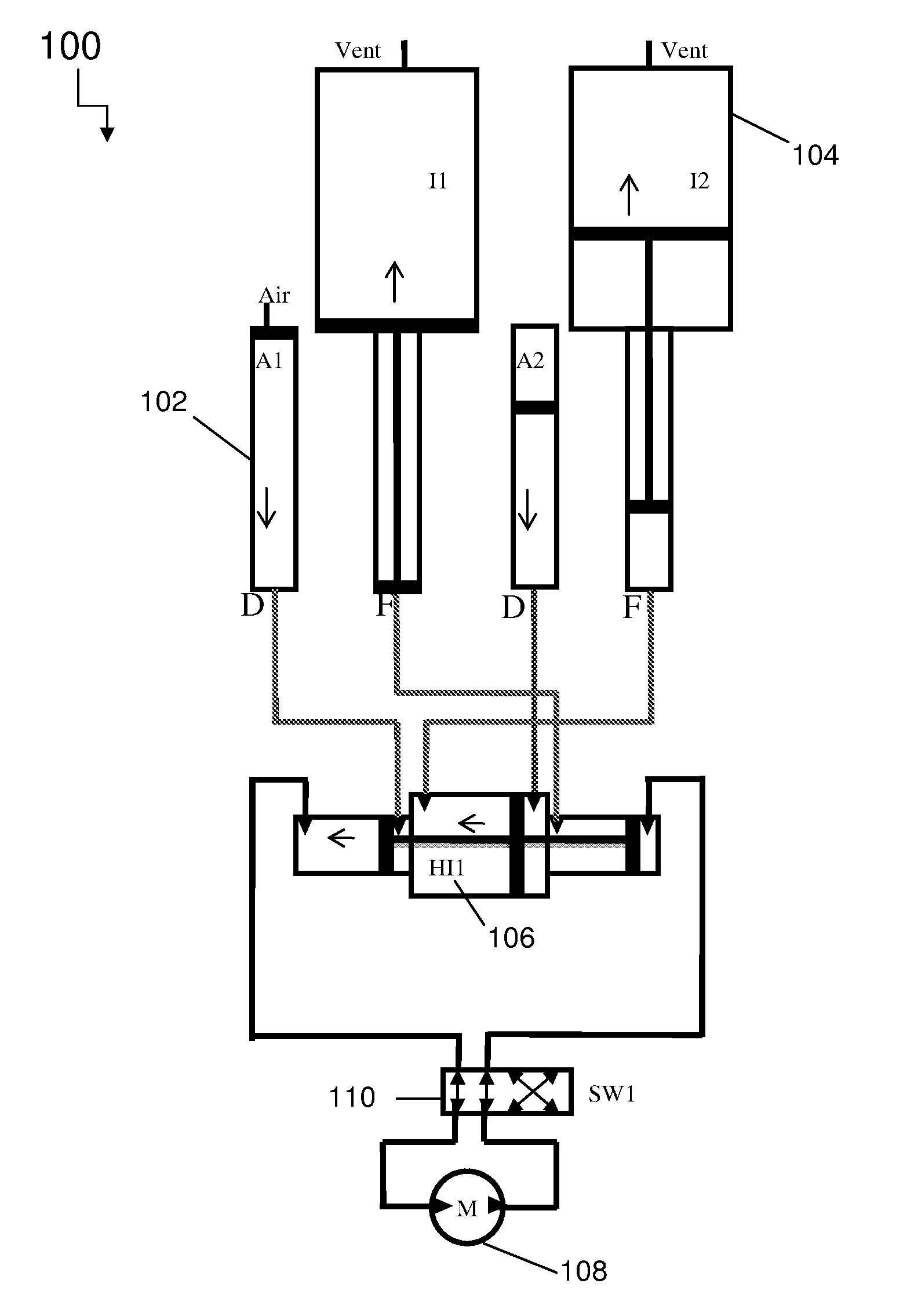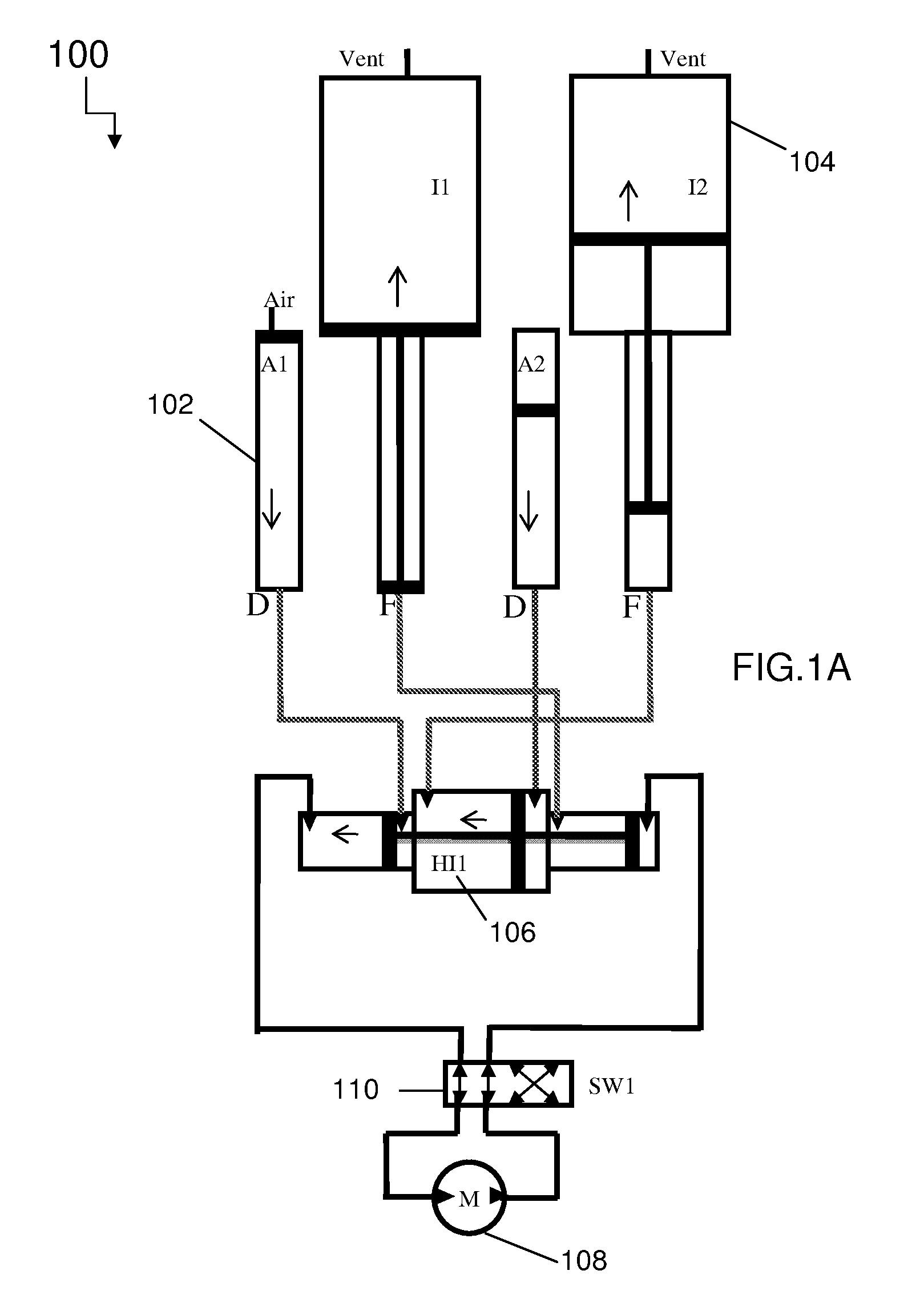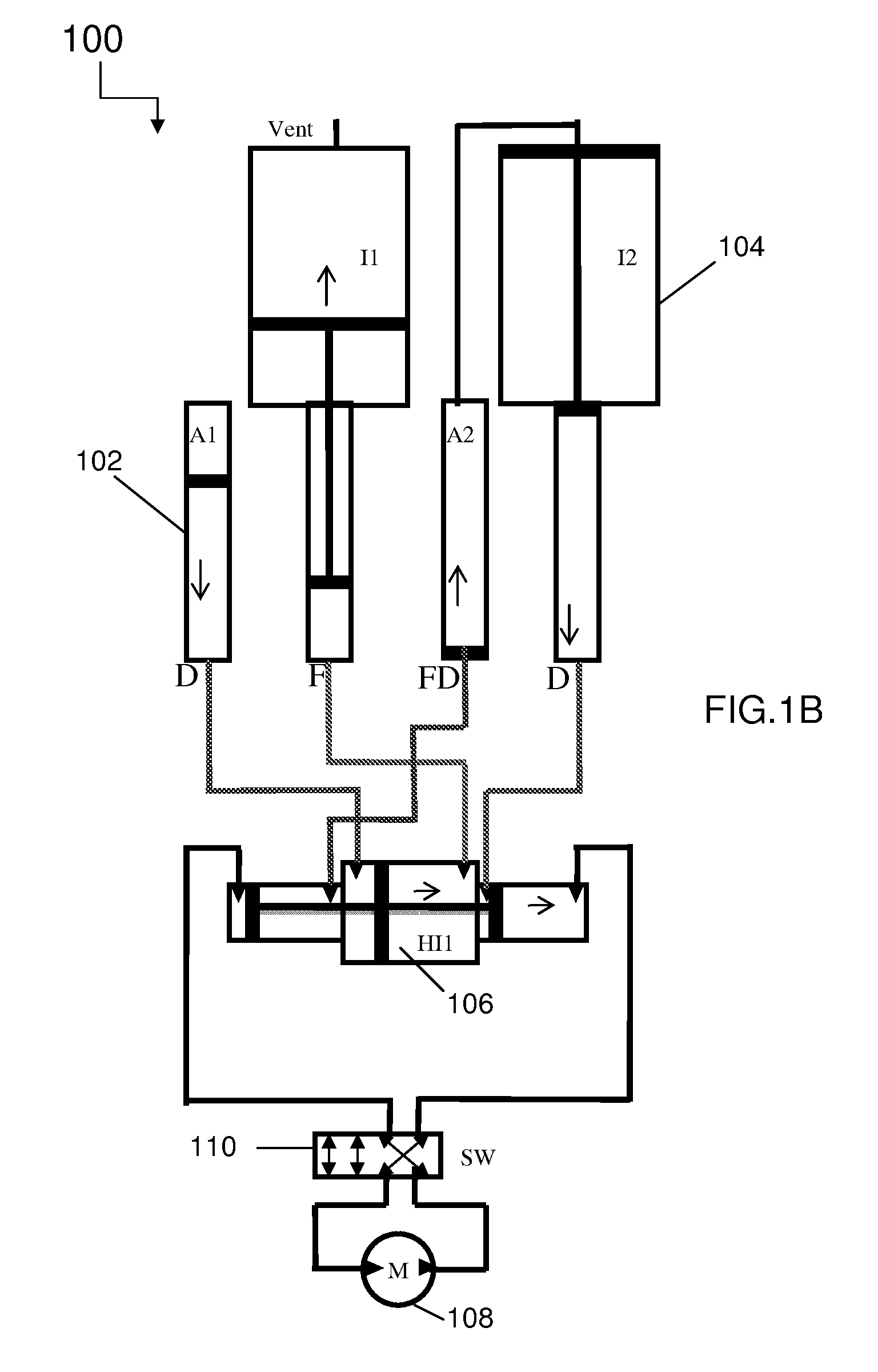Systems and methods for improving drivetrain efficiency for compressed gas energy storage and recovery systems
a technology of compressed gas energy storage and recovery system, applied in the direction of electrical storage system, clutch, fluid coupling, etc., can solve the problems of inadvertent brownout and blackout, burn expensive fuels, natural gas, etc., and achieve low specific-energy cost, long life, and well tested
- Summary
- Abstract
- Description
- Claims
- Application Information
AI Technical Summary
Benefits of technology
Problems solved by technology
Method used
Image
Examples
Embodiment Construction
[0072]The various systems and methods described herein refer to multiple arrangements of pneumatic and hydraulic-pneumatic components, the components generally designated as follows: accumulators (A1, A2, . . . ); intensifiers (I1, I2, . . . ); hydraulic-hydraulic intensifiers (HI1; hydraulic motors (M), and directional valves (SW1, SW2, . . . ).
[0073]FIGS. 1A-1D depict the major pneumatic and hydraulic components for a compressed air energy storage and recovery system 100 using staged hydraulic conversion. FIGS. 1A-1D illustrate four time steps in a single full cycle. The system 100 includes two pneumatic-hydraulic accumulators 102 and two pneumatic-hydraulic intensifiers 104 paired with one double-acting hydraulic-hydraulic intensifier 106, coupled with a variable displacement hydraulic pump / motor 108. In particular, the system 100 includes two equally sized hydraulic-pneumatic accumulators 102, labeled A1 and A2, two hydraulic-pneumatic intensifiers 104, labeled I1 and I2, with h...
PUM
 Login to View More
Login to View More Abstract
Description
Claims
Application Information
 Login to View More
Login to View More - R&D
- Intellectual Property
- Life Sciences
- Materials
- Tech Scout
- Unparalleled Data Quality
- Higher Quality Content
- 60% Fewer Hallucinations
Browse by: Latest US Patents, China's latest patents, Technical Efficacy Thesaurus, Application Domain, Technology Topic, Popular Technical Reports.
© 2025 PatSnap. All rights reserved.Legal|Privacy policy|Modern Slavery Act Transparency Statement|Sitemap|About US| Contact US: help@patsnap.com



